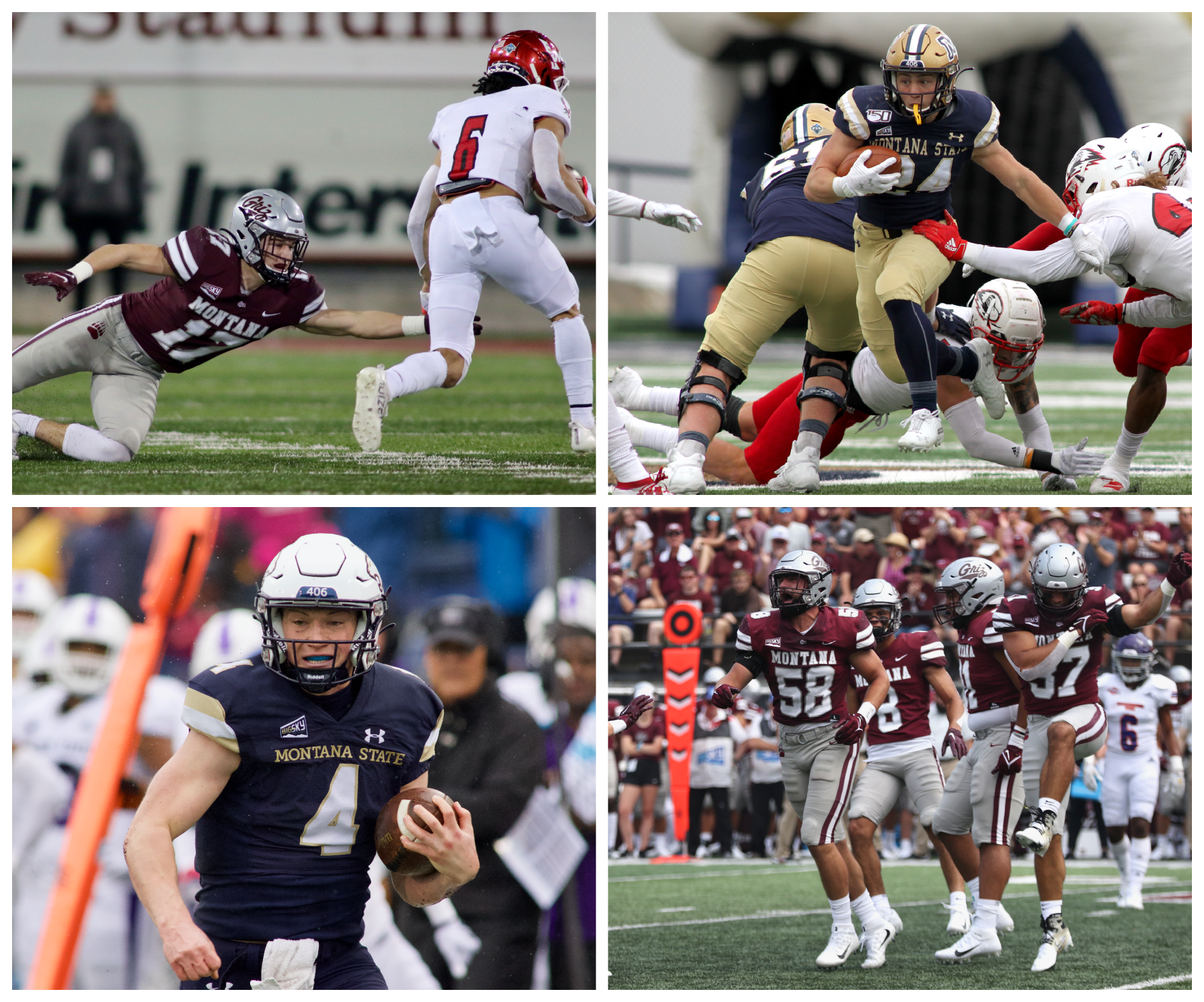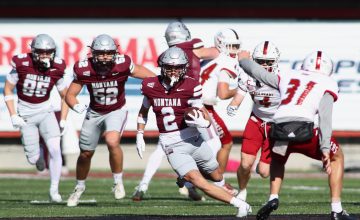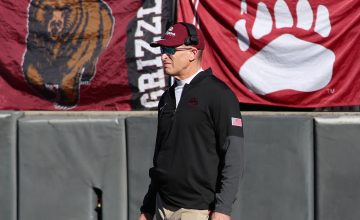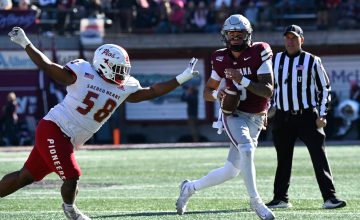The battle in the trenches is always a pivotal part of a football games. But the ability to run the ball, or lack there of, when the Bobcats play the Grizzlies have been perhaps the most important factor in the rivalry game over the last handful of years.
And that will certainly be the case again as Montana and Montana State square off for the 121st time on Saturday afternoon in Bozeman.
Jeff Choate’s Bobcats used a physical, bruising rushing attack with a variety of quarterbacks and ball carriers to abuse Montana along the line of scrimmage on the way to the first four-game winning streak by the Bobcats over the Grizzlies since the early 1970s when Sonny Holland roamed the sidelines at MSU.
In Montana State’s first win of the Choate era over the Griz in 2016, MSU completed just two passes, but rushed for 368 yards and averaged 5.9 yards per carry on the way to a 24-17 win in Missoula. True freshman Chris Murray etched himself in rivalry game lore with 142 yards and two touchdowns in the win.
The following season in Bozeman, Nick LaSane had one of the best games of his Bobcat career, rushing for 121 yards and a 71-yard touchdown. Troy Andersen, then a freshman running back, scored a pair of rushing touchdowns and finished with 64 rushing yards as MSU rushed for 322 yards and averaged 5.6 yards per carry in a 31-23 win.

In 2018, Montana State mounted a comeback for the ages, rallying from 22-0 deficit to post a 29-25 victory in Bobby Hauck’s first season back at the helm for the Griz. While the goal line stand that serves as an indelible moment in time in Bobcat football and Cat-Griz rivalry history is the most memorable moment of that game, Andersen’s 107 rushing yards and three touchdowns along with MSU’s 229 rushing yards are were just as important.
And in 2019, the last time the rivalry game was played in Bozeman until this Saturday’s 121st edition of the historic battle, Montana State decimated Montana like never before. MSU’s 48-14 victory marked the largest margin of victory by the Bobcats over the Grizzlies in the history of the rivalry. And the hosts did it thanks to 171 rushing yards by Isaiah Ifanse, 121 more from Logan Jones and 382 as a team.
All four of those powerful performances came against a high-pressure, swarming Montana defense that entered the game with as many plays at or behind the line of scrimmage than any team in the Big Sky Conference. And each of those four wins, Montana State dominated the Griz at the point of attack, both blowing UM off the ball and getting linebackers and defensive backs out of their gaps, allowing for gash plays at a prevalent rate.
Last season, the Griz flipped the script. Montana swarmed the Bobcats from start to finish, holding MSU to just 96 rushing yards and 2.3 yards per carry on the way to a 29-10 victory, the first rivalry win since Hauck’s return and the 73rd in the history of one of the longest rivalries in college football.
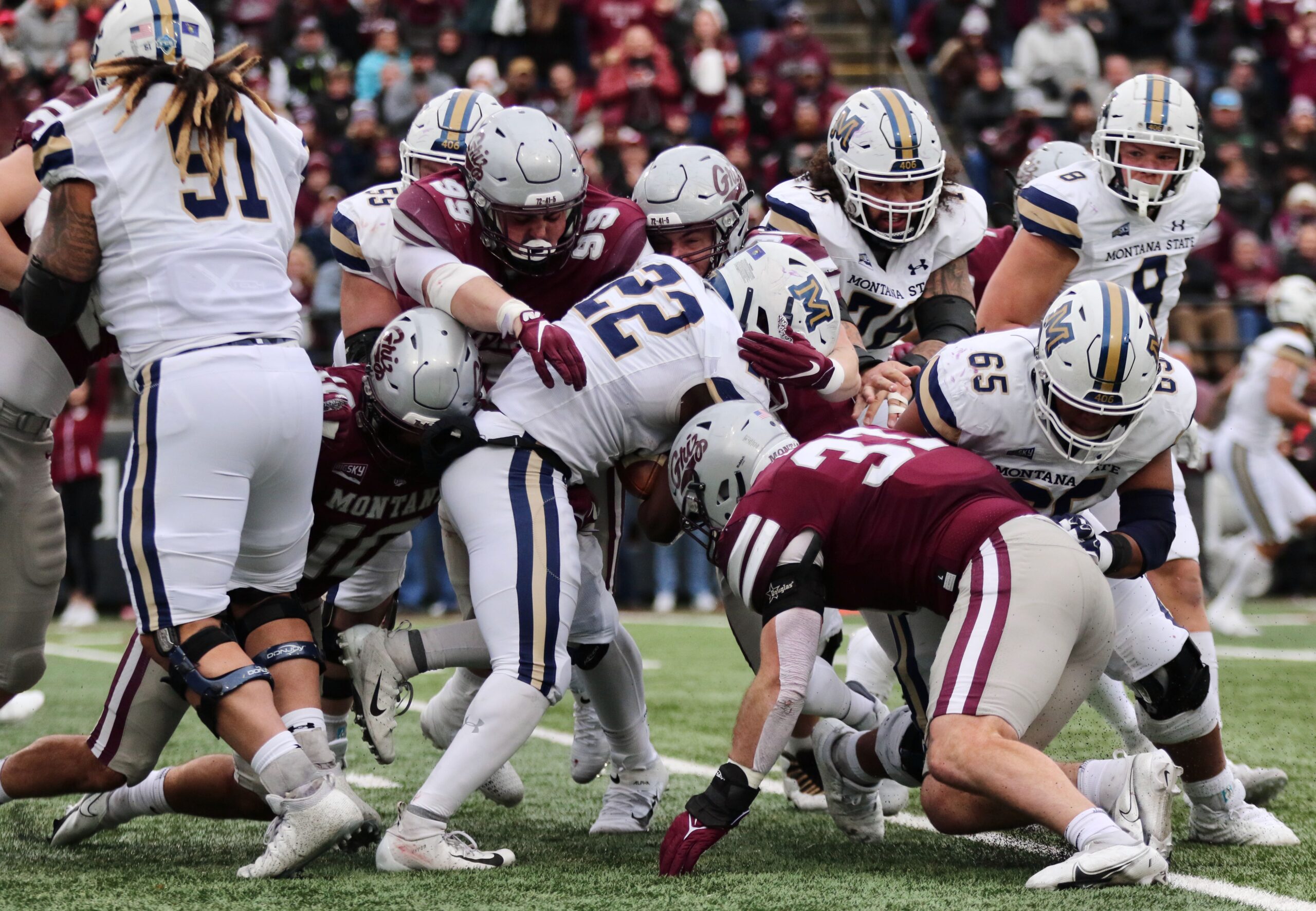
“We knew early on that it was going to be a heck of a game and a fist fight and it was,” Montana senior captain and All-American linebacker Patrick O’Connell said. “There’s a lot of stuff we did that dictated what they did and you saw that in the results based off that. We need to not let them dictate what we do this year and we need to dictate what they do.”
For as good, and reliant, as Montana State has been running the ball the last few years, this year’s ‘Cats might be even more run-heavy. And for as ferocious and aggressive as Montana’s defense has been at stopping the run and forcing negative plays since Hauck returned, this version of the Griz might be the best yet at erasing opposing team’s rushing attacks.
Montana State’s powerful, explosive rushing attack has been a revelation this season. Despite Ifanse, an All-American who set MSU’s single-season rushing record last season, being unavailable so far this season and despite Kaegun Williams, a talented graduate transfer from San Diego State, also missing the season, the Bobcats lead the Big Sky Conference and rank second in the FCS by rushing for 314 yards per game.
Last week, with converted wide receiver Marqui Johnson and walk-on redshirt freshman Garrett Coon serving as the primary ball carriers out of the backfield, MSU rushed for a school record 554 yards in a 72-28 drubbing of hapless Cal Poly in San Luis Obispo, California.
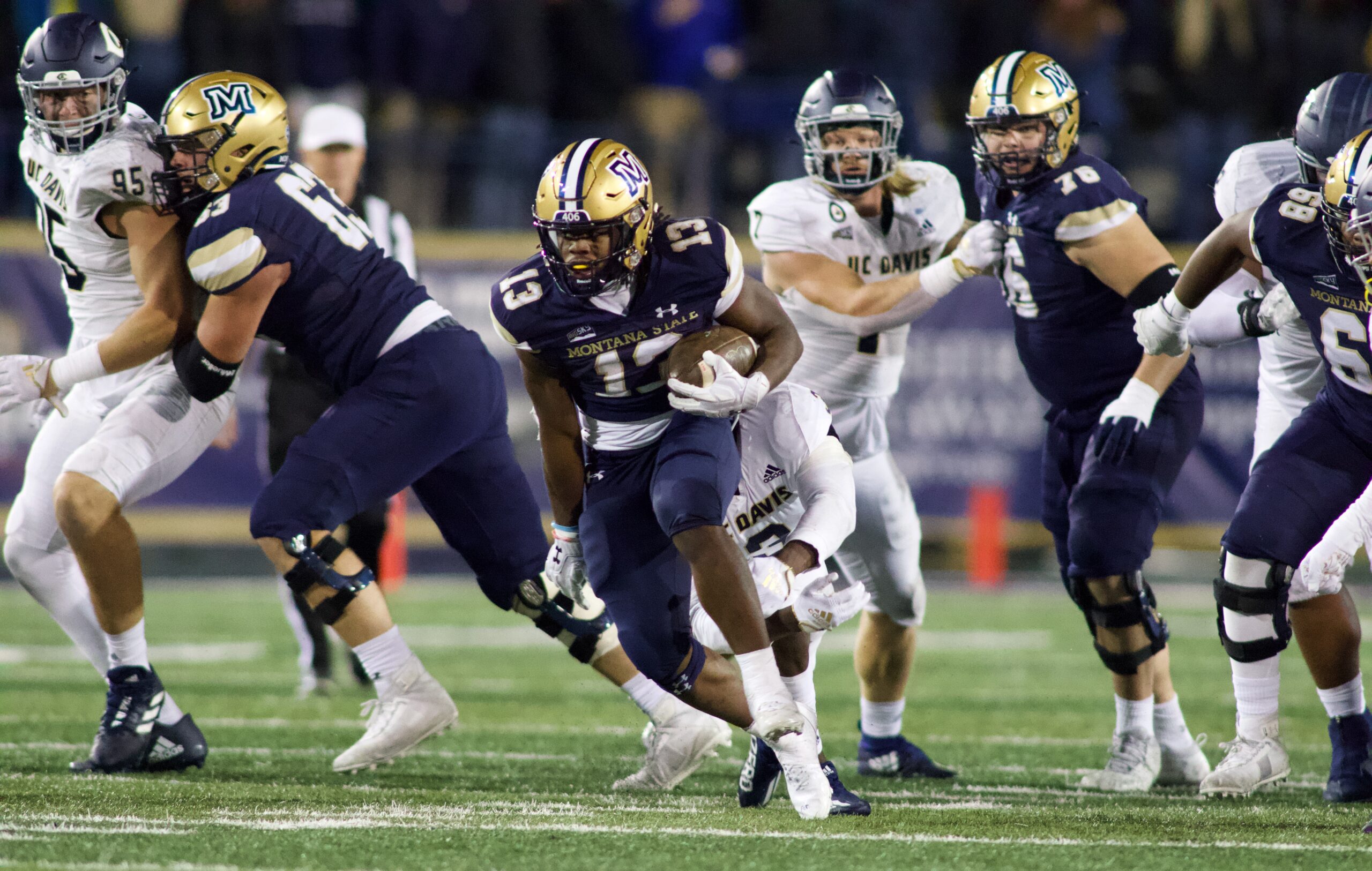
“We have great guys blocking up front and we have a good scheme that the guys understand,” MSU second-year head coach Brent Vigen said. “We have been able to come in each week and say here’s what we have personnel-wise and then decide what’s going to be our best mode to attack this particular opponent.
“We are 10 games in, over 300 yards rushing and it’s come in all different forms. The first credit goes to the offensive line. That has been the steady hand, that’s been the rock. And those guys have continued to get better. Plus, our coaches putting guys in a position. And we have play-makers. We have some explosive guys on this team and our speed and the ability to finish runs has been apparent.”
Ifanse and Williams aren’t the only backs that have missed time. Lane Sumner has three 100-yard rushing games this season and has missed all or parts of five other games. Jared White, a talented freshman who started MSU’s second game of the season, broke his leg that afternoon and hasn’t played since.
MSU quarterback Tommy Mellott is fifth in the Big Sky Conference in rushing yards with 715. Sean Chambers, a junior quarterback who’s missed the last month, still ranks ninth in the conference with 622 rushing yards.
“They are rushing for a lot of yards and putting up a lot of points,” Hauck said. “I expect the quarterbacks to run it a lot. Their quarterbacks are their leading rushers. There’s some option components to it. It’s similar to what they have done in the past. They ran all this stuff against us last year.”
Sophomore Elijah Elliott has rushed for 550 yards, 10th-most in the league. Johnson is averaging an absurd 13.7 yars per carry and has rushed for 329 yards on 24 carries. Sumner’s 450 yards would rank 15th in the league but he’s not listed on the league’s leaders because he hasn’t played in enough games. Even Coon’s 239 yards are in the top 30 totals in the Big Sky.
“They are very diverse and they do a lot of things, there’s a lot of offense we have to prepare for,” O’Connell said. “You have to stop the run. You have to stop the quarterback runs. You have to stop their inside stuff, you have to stop their outside stuff. They throw bubbles and they throw the ball deep. They have a very good run game and a good offensive line that pushes guys around who knows what they are doing. They are a good offense and it will be a heck of a challenge for us and we are excited for it.”
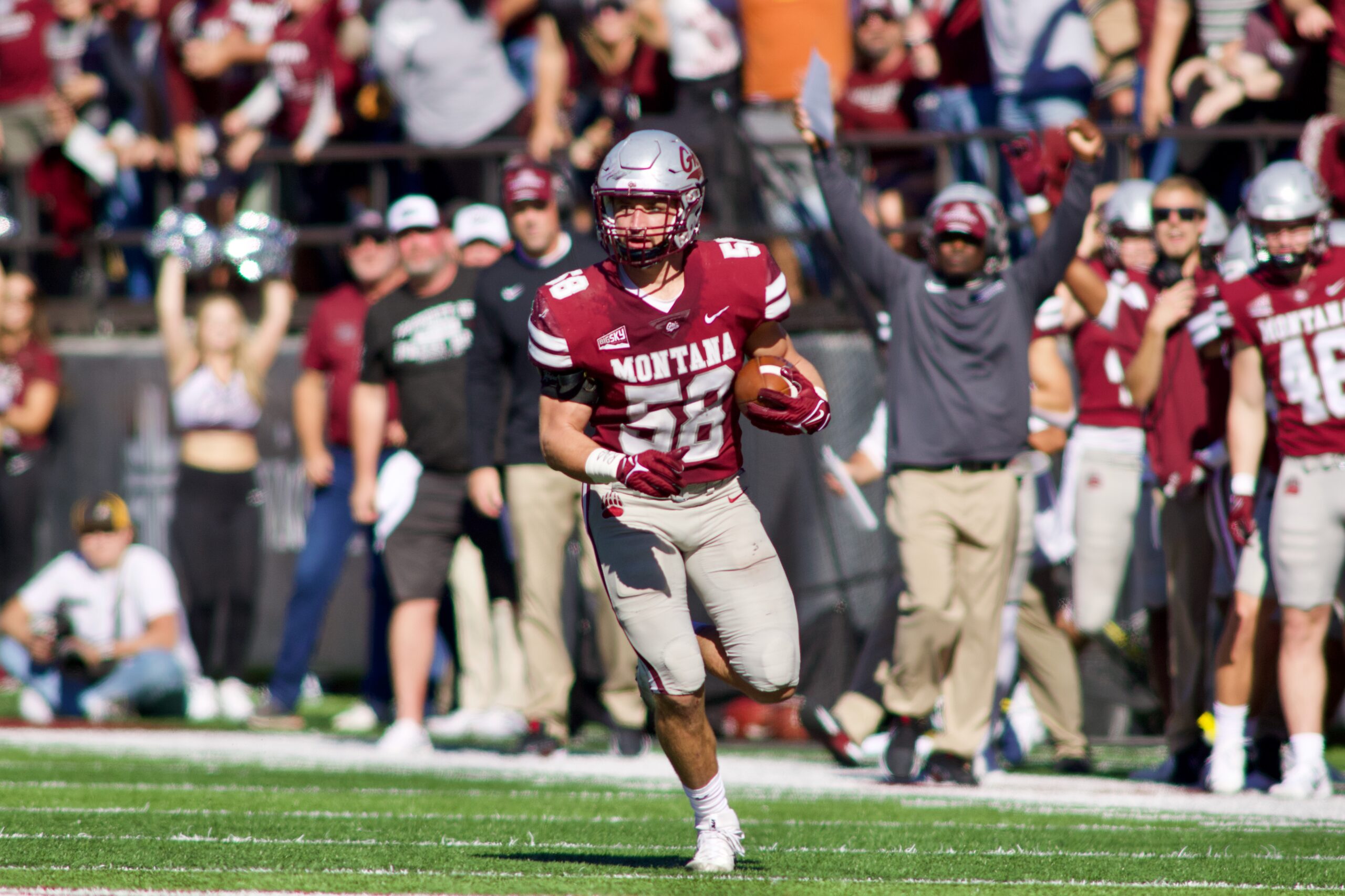
Montana has used its swarming, blitzing and veteran defensive front to attack opposing offenses all season. The Griz are the only team in the Big Sky that has surrendered less than 1,000 yards rushing so far this season.
UM is giving up 97.3 rushing yards per contest, which is 30 yards better than Weber State for the best average in the league. Opponents have mustered just 2.6 yards per rush against the Griz. Montana also leads the coverage surrendering just 14.7 points and 291 yards of total offense per game.

“There’s a lot of factors that go into the defense but it starts up front,” said O’Connell, a Kalispell Glacier product that leads the Big Sky with eight sacks. “All the big guys take up blocks. And all the stuff we do isn’t quite like the stuff other people do so it takes a lot of preparation to play our defense and that’s a huge part.
“I think it shows the attitude and discipline of our team. I think it stems down from Coach Hauck and the staff to the players. Guys are always always ready to come in and guys are prepared and they play to the standard.”
The Montana-made linebackers for the Grizzlies are the catalysts again. O’Connell is a Buck Buchanan Award candidate again, although he’s missed two games and part of a third with a leg injury, making his stats less gaudy than last year when he finished in the Top 3. Marcus Welnel, a Helena Capital product who is wearing UM’s vaunted No. 37 legacy number, is fourth in the Big Sky with 10.5 tackles for loss, the second-best total on the Grizzlies behind O’Connell’s 12 tackles for loss.
With O’Connell and junior Braxton Hill — a speedy Anaconda product who burst into the starting lineup this season — missing time with minor injuries, Levi Janacaro has also emerged as a budding star. The 6-foot-1, 238-pound mass of muscle had at least 12 tackles three games in a row in place of Hill and he has 71 total tackles, third on the Griz and 13th in the Big Sky Conference. The Missoula Big Sky product has nine tackles for loss.
If you include those four plus Missoula Big Sky product Tyler Flink and Missoula Loyola product Ryan Tyrell, the Griz linebackers from Montana have 42 of UM’s 85 tackles for loss. Montana linebackers have 20 of UM’s 32 sacks.
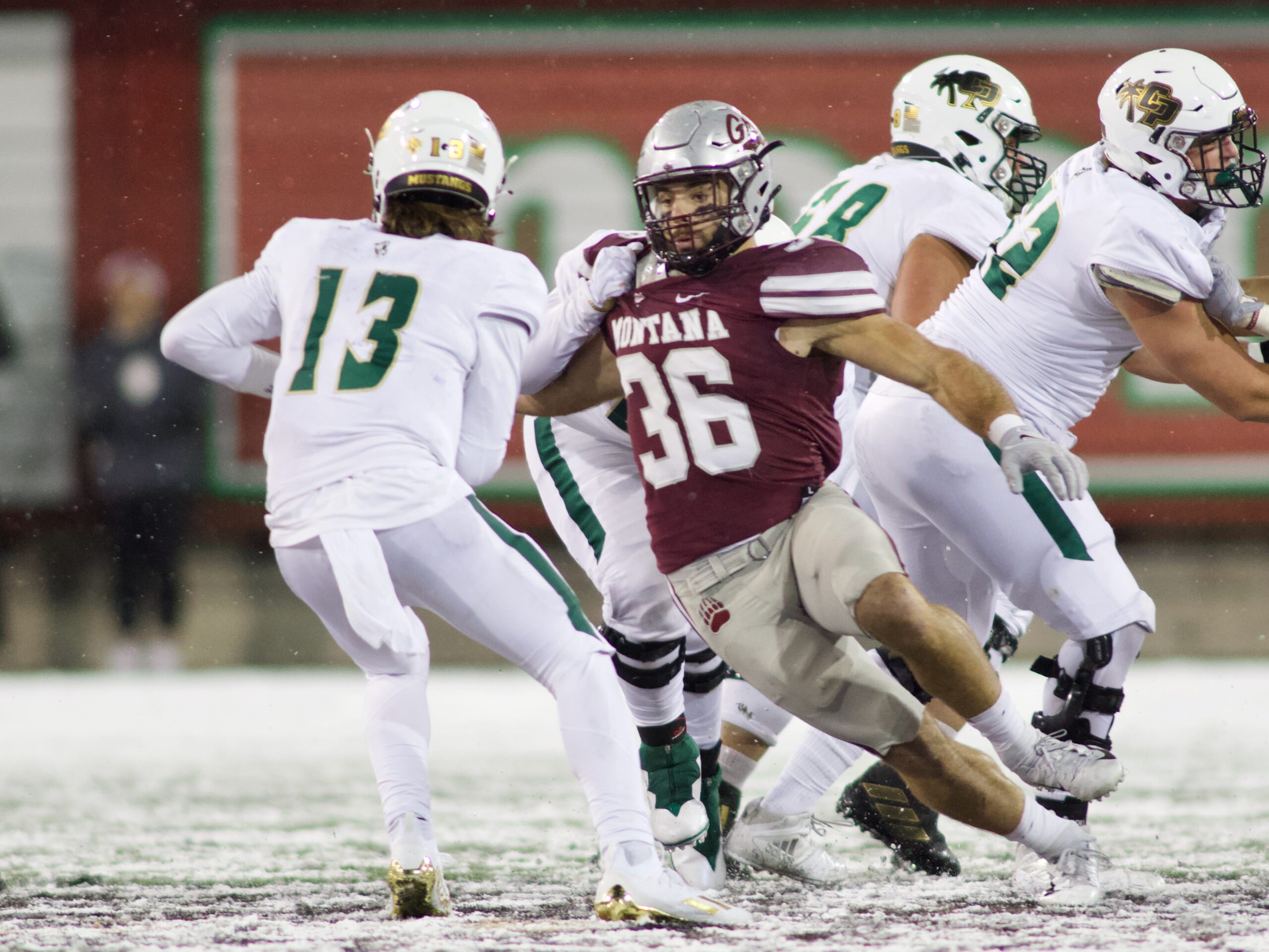
“It’s aggressive and the guys play SO hard on defense,” Vigen said of Montana’s defense. “It’s an aggressive form of defense to start with, an attacking style and it’s different than anything else we see in our league. I think that helps them. They are kind of this stand alone within our league as far as the league goes.
“More than anything, I think their guys understand it and they play hard. A guy like O’Connell is a tremendous play-maker within it and he’s used a lot of different ways. I think in a pass rush mode, he’s tough to handle but he’s also doing a bunch of different things. He’s dropping to the flat, picking balls off, flying all around. I think their corners are really good. That allows them to play those front six in a lot of different ways.
“When you can play man to man on the outside and throw a lot of different version at that front six at you, it looks way more complicated than it might even be. They are good on defense and that’s been a consistent thing throughout the season and it looks a lot like last year.”
Strength versus strength: it’s a common theme in this year’s rivalry game. And Montana State’s explosive rushing attack against Montana’s swarming run defense might be the most important clash that will play out at Bobcat Stadium on Saturday.
“A win would mean everything,” O’Connell said. “Last time we were there, we didn’t perform well and I want nothing more than to go there and do what we are capable of doing. Key factors for us are playing our game, not letting them dictate what we do and stopping the run. That’s the biggest deal.”
Photos by Brooks Nuanez. All Rights Reserved.

